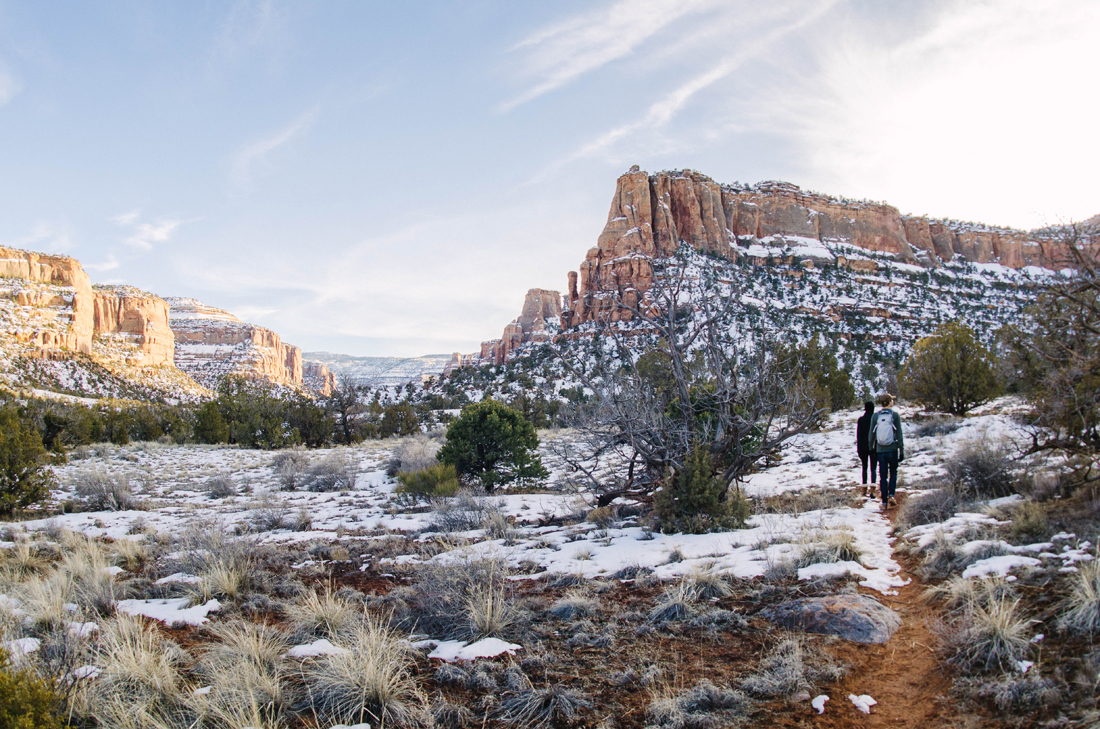Devil’s Canyon Trail D3
Devil’s Canyon Trail D3 after a fresh spring snow. Photo: TJ Smith
My personal favorite springtime hike on Grand Valley public land is Devil’s Canyon Trail D3 near Fruita. The babbling creekbed and towering sandstone walls are enhanced in late spring by an array of 30-plus varieties of blooming wildflowers and cactus, as well as the chance to see young desert bighorn sheep.
Devil’s Canyon trailhead gives hikers access to an expansive network of trail options of varying lengths and difficulty. The 7-mile D3 loop is rated moderate with a few challenging ascents and descents, for which I recommend taking a hiking pole. It traverses both the McInnis Canyons National Conservation Area and the Black Ridge Canyons Wilderness Area. Protection of this spectacular canyon country ensures amazing hiking experiences today and for future generations.
Access the trailhead by traveling on I-70, exiting at Fruita and turning south. After 1.5 miles, turn right at Kings View Estates. The road passes through the small subdivision before making a sharp left. After another quarter mile, the trailhead will be on your left.
The large parking lot has facilities, area maps, and a large gate where all trails begin. Dogs are welcome and plentiful. Dog waste bags and garbage cans are provided at the trailhead.
At the third “Devils 1” sign, choose from two options: Turn right here and left at the next “Devils 3” sign to a rock staircase leading down to the creekbed, or go straight over a wooden bridge to an immediate right at “Devils 3,” serpentining the creekbed. Snowmelt and rain keep water running in the canyon during spring months.
At 1.5 miles, the canyon walls get higher and the trail splits where it reaches the black precambrian granite. This is where the loop begins. The starting direction is optional, but I prefer the counterclockwise right fork, which is the longer leg of the loop. The climb out of the canyon creekbed is steep at first but settles into a winding roller coaster through juniper and washes.
An old cowboy line shack appears at what is considered the unofficial halfway point. Large basalt boulders nearby offer the perfect place to enjoy a relaxing break and beautiful views. Be aware of loose dirt and rocks on the steep return side of the loop.
Since footing on Devil’s Canyon requires much of your attention, be sure to take frequent water breaks, spotting breathtaking colorful flora and precarious sandstone pinnacles along the way.
Devil’s Canyon is a popular destination year-round. However, following the D3 loop gives you a lightly populated, quiet wilderness experience you’ll soon want to repeat.

